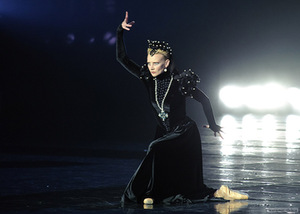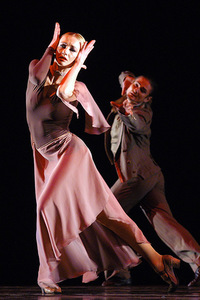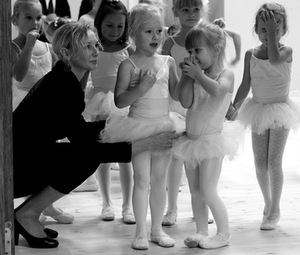Dancing soul 4
In brief: According to the ballerina, choreographer and dance teacher R. Kudžmaitė-Daraškevičienė, be it yesterday, today or forever, dance always speaks about the same thing - passion of life, human and destiny. Forms of expression change, but the very essence of dance remains unchanged. Thus, how and what does the dance speak of today?
Rūta Kudžmaitė-Daraškevičienė is a third-generation offspring in ballet: her mother - Lithuanian Opera and Ballet soloist Sigita Vabalevičiūtė (born 1946); father - one of the most famous Lithuanian ballet soloists of the second half of the 20th century Vytautas Kudžma (born 1946) and her maternal grandmother - Birutė Dženkaitytė (1922–1971) was a ballerina of Kaunas Musical Theatre.
Being born into the family of dancers it is probably unavoidable, but Livija Gulbinaitė in her article about the artist's family notes, "It is rare, in the history of ballet, that a beautiful genealogical branch grows out of the artists." So, why ballet?
Rūta Kudžmaitė-Daraškevičienė says, "in fact, my parents did not foresee the future of a ballet dancer for me. Quite the opposite. They were very realistic about by abilities and were not encouraging love for ballet. I was a smart girl, doing very good at school and they hoped that I might do something nice in another field. It was a fateful coincidence that I got in M. K. Čiurlionis Art School (currently National M. K. Čiurlionis Art School)."
I wanted to know what artist personally thinks of ballet and whether she finds it to be superior to other dance forms.
According to the dancer ballet is a classic, an unchanging value, the unit of measurement. "As a craft, classical dance, for me is superior to other types of dances, especially because of its consistency and strict, clear rules. Actually IT is quite capricious and whimsical. "It is jealous, ruthless and does not excuse infidelity," my dad mentioned in one interview and I completely agree with him. I like the aesthetics of body lines shaped by IT (what, in my eyes, contemporary dance artists lack), the technique and subtleties of movement."
The dancer finished her ballerina career with the role of Queen Bona in the play Barbora Radvilaitė. I was interested to know what it means to create a role that is completely opposite or very close to you.
"We people are so diverse! All our lives we polish one character trait, cherish the one we have and search for the missing ones. It is much more interesting to create a controversial character. It is an opportunity to get to know yourself better, to experience new sensations and acquire new experiences. And still, it was not that easy to make friends with Bona, because I knew that it will be my last role on the Big stage," explained the dancer.



